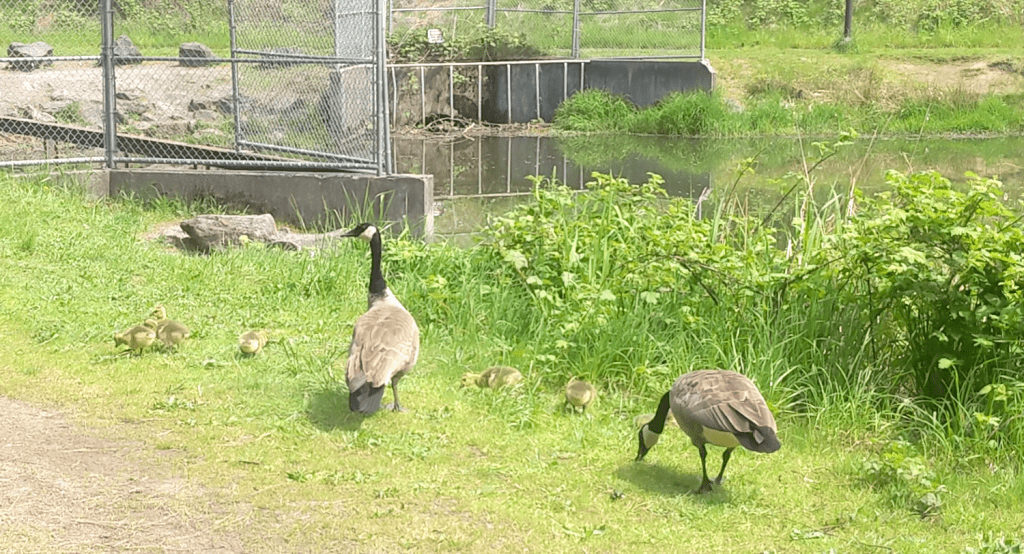There’s No Ducking the Goose Problem

Photo by Ayla Beck
The geese are flying south again!
These past few weeks, you’ve probably seen (or at least heard) that most of our gaggles have turned into skeins – a “gaggle” is a group of geese on the ground while a “skein” is a group of geese in the air.
Our feathered friends may be coming here from as far as Alaska, and others are heading down south to California. In the spring, most all will return north to their birthplace, where they will raise their own young.
The Canada Goose is the most common species of the bird in Oregon, identified by its gray or brown bodies, black necks, and white chins. The smaller version of Canada Goose are now considered a separate species, called a Cackling Goose.
Geese are very social; they live in communities, meeting up in large flocks to migrate. Individually, they mate for life and goslings can recognize their parents even after they’re grown.
Believe it or not, geese have been a hot topic in government legislation for over one hundred years. Canada Goose numbers were declining in the early 1900s due to overhunting, so federal hunting restrictions were created in the 1910s. Meantime, humans destroyed much of the geese’s natural wetland habitats and by 1962 they had almost gone extinct!
Since then, government regulations and individual natural conservation efforts have been tried to bring the Canada Goose back – and, boy, did they come back. In the past few decades, their number in the 48 contiguous American states has greatly increased, and many now stay in place year-round.
Geese don’t mind people. In fact, in building habitats for ourselves, humans have cleared out forests, replaced them with open lawns and farmland that geese love, and have driven away many natural predators, such as coyotes and bobcats. And as we cause our planet to warm, summer nesting grounds are becoming livable year-round. Canada Geese are migrating later in the year and by much shorter distances, or even not at all.
In towns all across the U.S., overpopulation of geese has become a serious issue. Too many geese mean too many goose droppings, which are a biohazard and can harm water quality. Geese cause agriculture damage and can be incredibly dangerous around airplanes, not to mention that they can get aggressive when a human gets too close to their goslings.
Lethally wiping out a whole flock of geese just leaves room for another group to move in. Luckily, humane deterrents are the most effective way of kicking the birds out of overpopulated spaces. There are now several goose-removal businesses in the Pacific Northwest that use herding dogs to chase and bark at the birds until they get fed up and leave. It’s a popular and effective method.
Whether you love geese or hate them, it’s clear these birds are adapting well to live and care for their families despite the drastic changes that humans have brought to their traditional homes. Since we were the ones who messed up goose populations to begin with, it’s up to us to find effective ways to solve these problems and live peacefully with them.

Staff Writer

Leave a comment